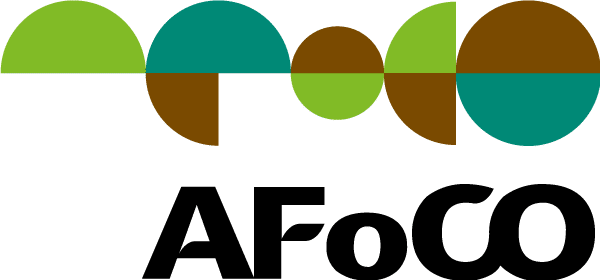June 22-23, 2023 — As a part of various programs that the AFoCO Secretariat organizes for its fellowship officials , a two-day study visit to forestry-related institutes under the Korea Forest Service was organized to provide opportunities for the of the officials of the 2023 Fellowship Program to gain insights on the sustainable forest management practices adopted and implemented in the Republic of Korea. Our fellowship officials talk about their experiences in the following sections:
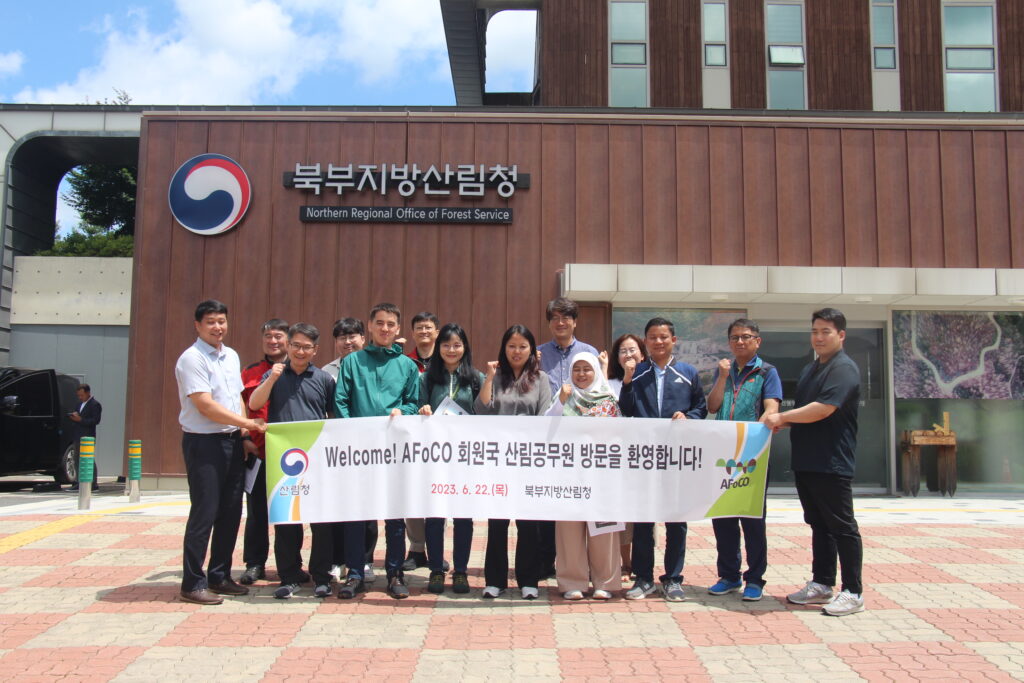
1. Northern Regional Office of Forest Service
On the morning of 22 June 2023, we visited the Northern Regional Office of the Forest Services located in Wonju-si, Gangwon-do. The Director General, Mr. Im Ha-su, briefed us on the overview of the Northern Regional Office. He said the Northern Regional Office, one of the regional offices under the Korea Forest Service, manages the largest extent of forest area in Korea. He further added that the regional office also plays a crucial role in the planning, management, and execution of forestry-related activities within the north of the Republic through its six other national forest management offices located in different areas.
A presentation on the main roles and responsibilities of the regional office was made followed by an interactive session with the heads of the different sections. We also had the opportunity to see the Real-Time Forest Fire Surveillance and Monitoring Server system along with a demonstration of forest fire suppression techniques and technologies that the Northern Regional Office uses to monitor and manage forest fires in the region.


2. National Forest Seed Variety Center (NFSVC)
After lunch, we visited the National Forest Seed Variety Center (NFSVC). The Director General, Dr. Kim Sung-man, and his team welcomed us and gave a brief overview of the center. He said that the NFSVC is under the purview of the Korea Forest Service (KFS). Highlighting on the three visions of the center, viz. expanding development of new varieties and the protection of intellectual property rights, increasing value of forest resources through the distribution of high-quality seeds, and promotion of bioindustry through the dynamic utilization of forest bioresources, he said that the NFSVC is paving its way towards a global leading organization in forest plant variety protection and improved seed variety production.
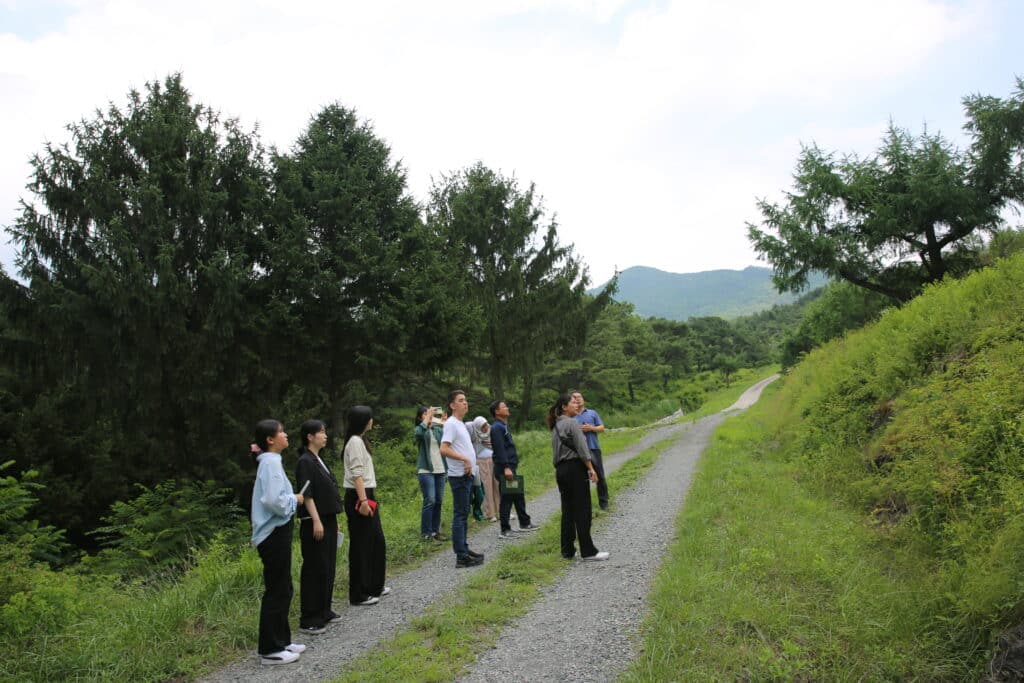
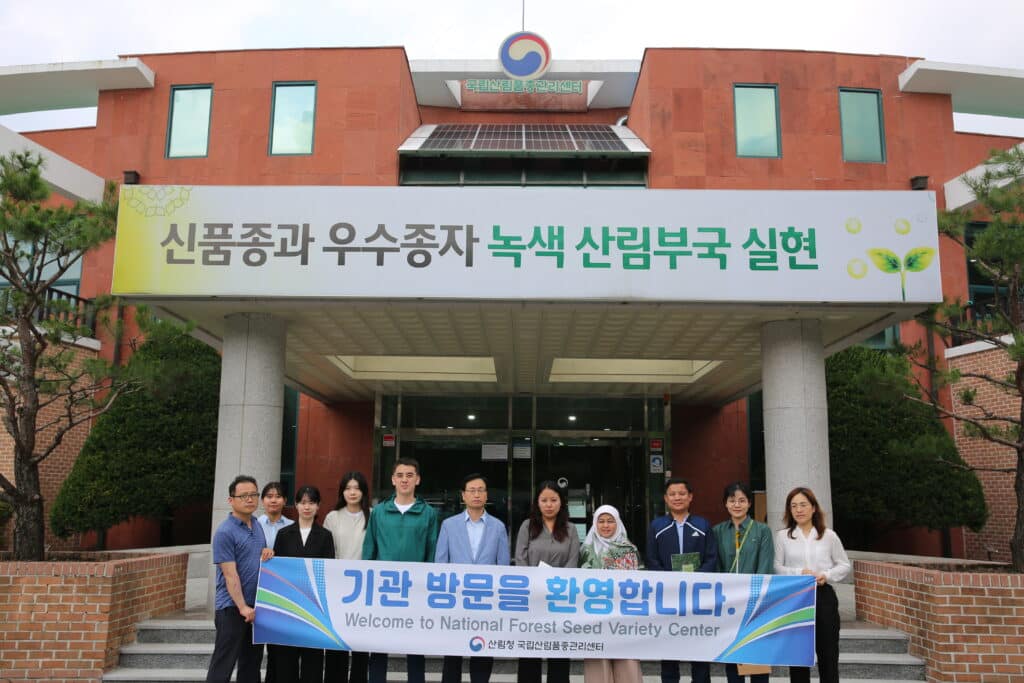
Later we also made a quick visit to the Chungju Seed Orchard, which is one of the facilities managed by NFSVC with an impressive array of tree species, including Larch, Nut Pine, Pitch Pine, and Tulip Poplar. The meticulous management of these diverse species ensures the preservation of their unique genetic traits, vital for the future well-being of forests.
One of the main highlights of our visit to this center was the introduction to the Smart Forest Seed Processing System (SFPS). This state-of-the-art technology has revolutionized the way seeds are processed, increasing efficiency and capacity significantly. The SFPS automates the seed processing journey, from collection to drying, extraction, cleaning, and even mechanical coating. By streamlining these essential processes, the NFSVC can better facilitate the distribution of seeds for planting, enabling more efficient reforestation efforts.
We also learned about the fascinating aspect of the seed coating process. The staff explained to us that by applying a protective layer to the seeds, their chances of successful germination and establishment in nursery environments are significantly improved, ensuring the successful propagation of forest species.

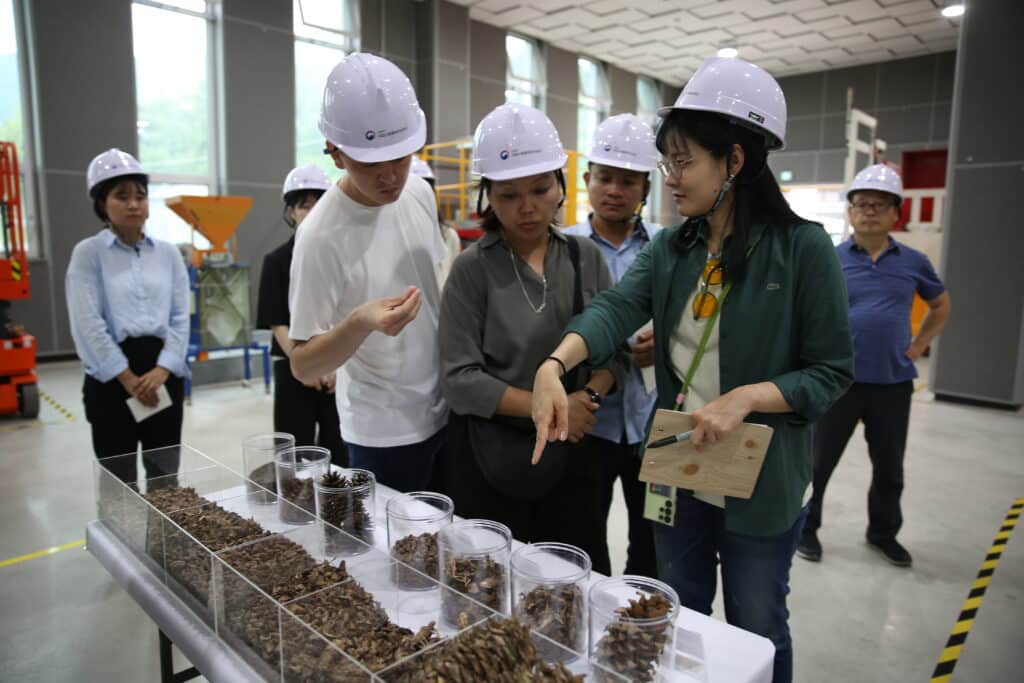
3. Central Regional Timber Business Headquarter under Forestry Cooperative
Following the visit to the National Forest Seed Variety Center, we had the opportunity to visit the Central Timber Business Headquarters within the Forestry Cooperative. Unfortunately, due to rainy weather, we couldn’t explore much of the timber processing site. We learned that this center is one of three forestry cooperatives in the Republic of Korea. Its primary role involves the production and distribution of processed wood in various shapes and sizes. These processed wood products serve purposes such as construction, landscaping, structural laminated woods, and wood pellets. The processed timber finds extensive use in constructing large wooden structures, establishing deck roads, maintaining mountain rails, and supporting other forestry-related activities, including the development of recreational forests furnished with amenities like gazebos, picnic tables, benches, and souvenirs.

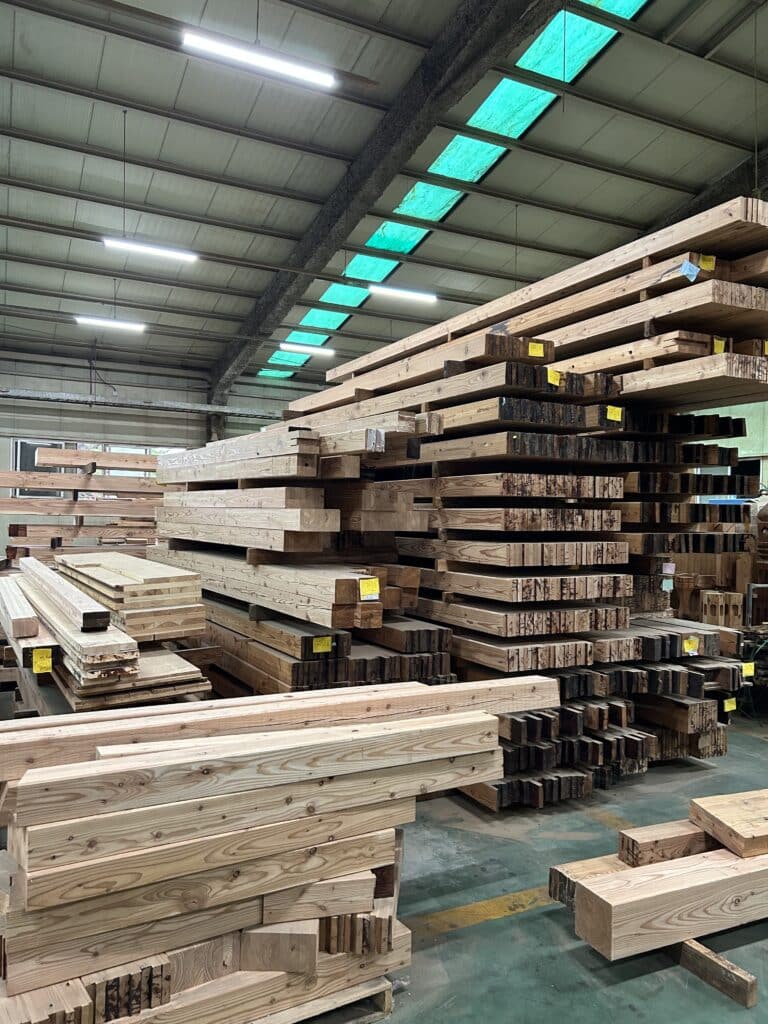
A particularly captivating aspect is the Center’s commitment to utilizing eco-friendly forest resources. It has earned environmental labeling certification, which prevents resource wastage and environmental pollution. This certification underscores the Center’s contribution to the sustainable growth of the national economy while conserving resources and reducing pollution.
4. Forest Technology and Management Research Center
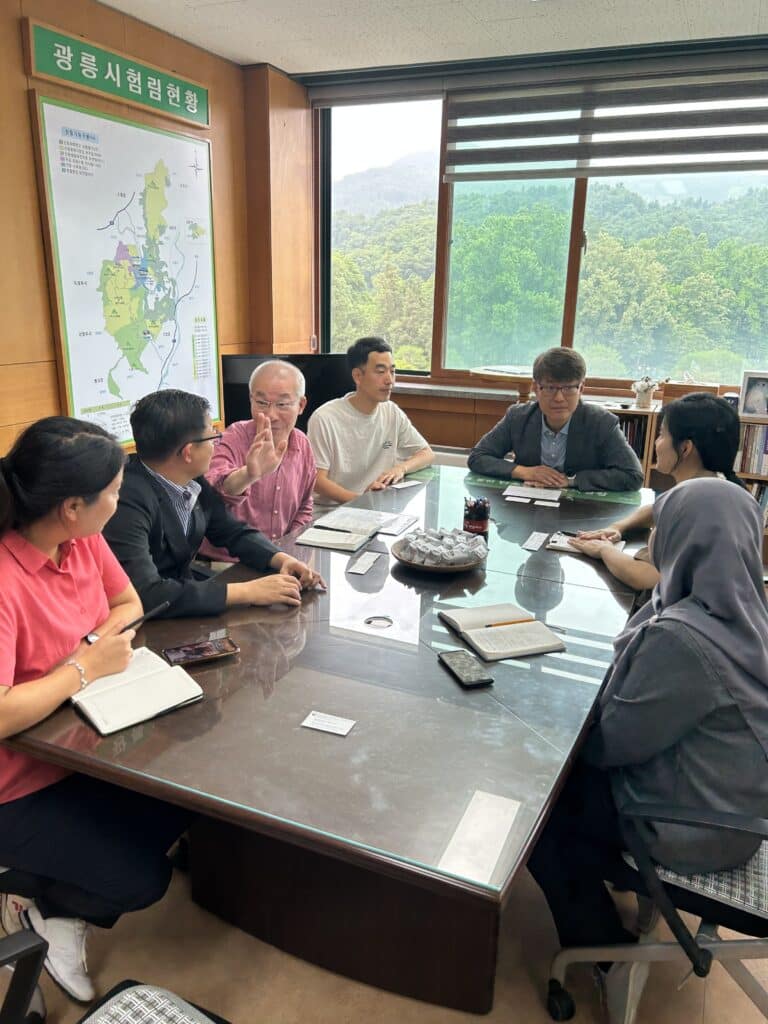
On the morning of 23 June 2023, we visited the Forest Technology and Management Research Center. It is one of the research institutes under the National Institute of Forest Science and as a leading field-based forestry research center, it plays a crucial role in the sustainable management of forest resources in the Republic of Korea. The forest areas of this center were part of the royal tomb of King Sejo of the Joseon Dynasty and were designated as experimental forests and nurseries in 1913, and in 2018 it was named it as the Forest Technology and Management Research Center. The center works with a very ambitious vision of “Realizing the economic forestry through technological innovation in the field of forestry”. To achieve its ambitious vision, mission, and strategic goals, the center is systemically organized and conducts research through its four labs namely Forest Road Engineering Lab, Mechanized Timber Harvesting Lab, Nursery and Reforestation, Silviculture and Management Lab. The General Affairs and Forest Protection Team are also important parts of the center.
While at the center, we visited the Nursery and learned about the Smart Nursery System. We were practically shown the entire nursery activities starting from soil medium preparation, raising seedlings, inspection, storage, packing, and hardening.
Besides conducting research on smart nursery systems, seedling harvest, and management, the Nursery and Reforestation Lab also develop guidelines of Nursery Practices for high-quality and low-cost seedling production. We also came to know that the Forest Technology and Management Research Center is contributing tremendously for the sustainable management of forest resources through its important research works and dissemination of improved findings and guidelines to end users in forestry fields.
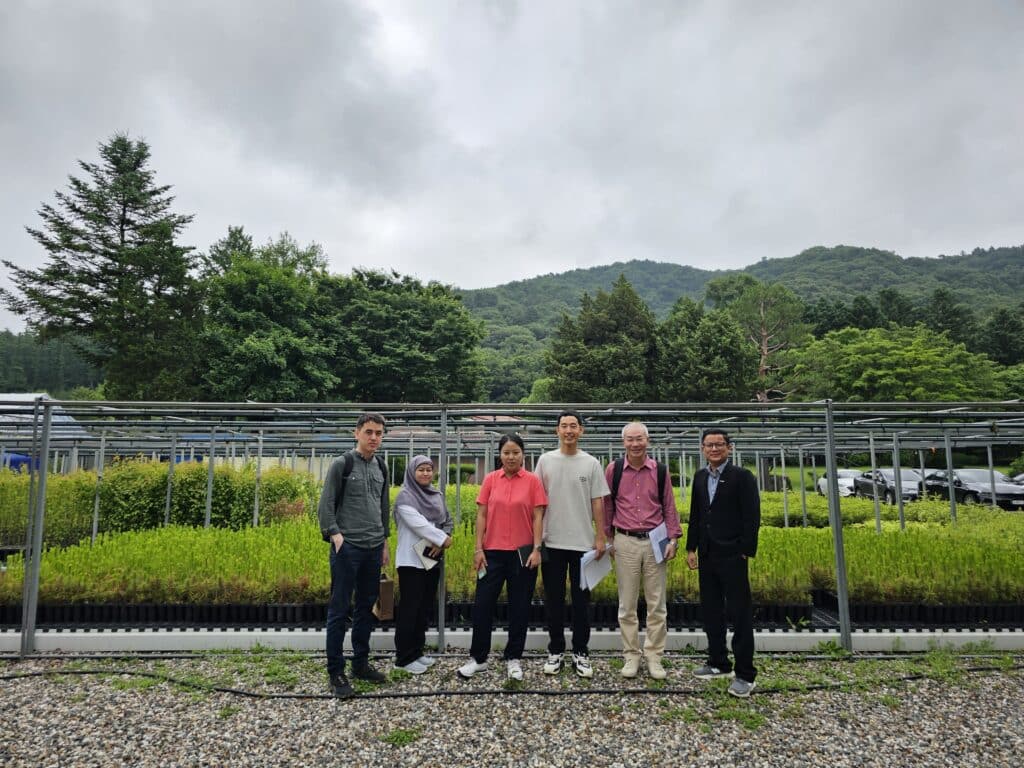
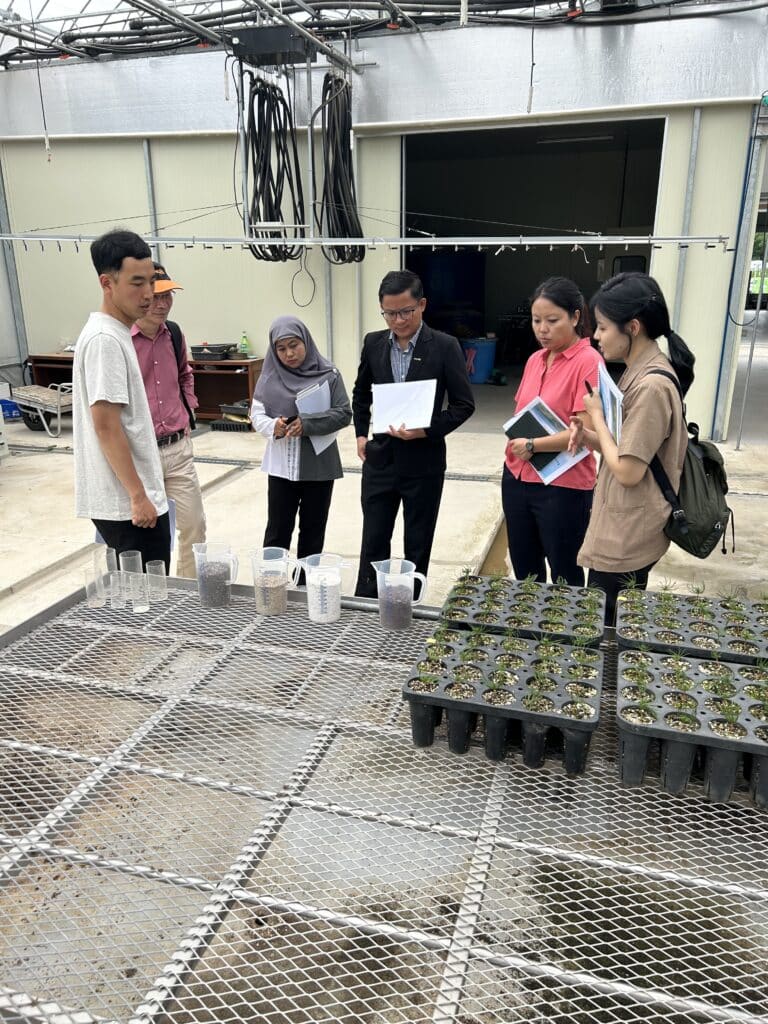
5. Korea National Arboretum
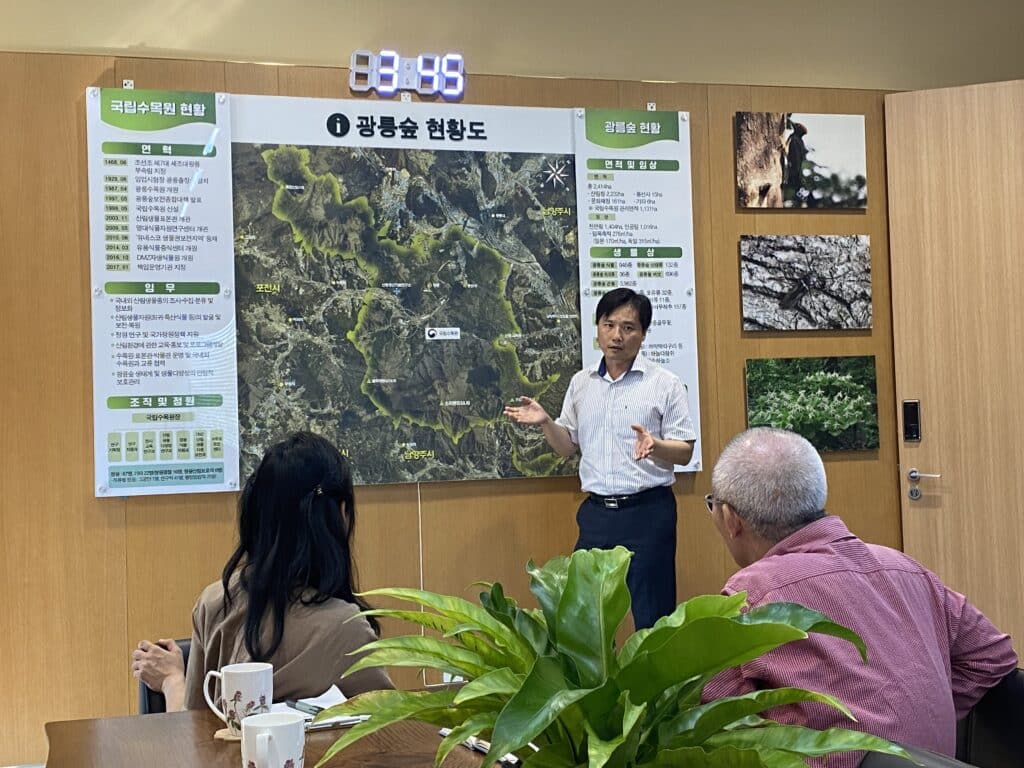
In the afternoon, we visited the Korea National Arboretum. The Korea National Arboretum (KNA), is a living testament to Korea’s rich botanical heritage and commitment to biodiversity conservation which is the reason why it was recognized as a UNESCO Biosphere Reserve in 2010. Spanning over an expansive area of 2400 hectares, KNA has historical significance as a royal forest housing the tomb of King Sejo from the Joseon dynasty. The Arboretum has stood the test of time for over five centuries, meticulously preserved to minimize human disturbance and protect its natural wonders.
We were captivated by the allure of the specialized gardens. Visitors can wander through themed gardens, discovering the wonders of both native and exotic flora, and gaining insight into their ecological importance and potential applications in various industries. The Forest Museum left us in awe with its stunning displays of wood collections. The museum also delves into the annals of Korean forestry history, featuring memorabilia and documentation of landmark events, including the founding of AFoCO (Asian Forest Cooperation Organization).
We also got the opportunity to visit the Baekdudaegan Seed Vault, which stands as a true testament to the arboretum’s dedication to conservation. The seed vault houses an extensive collection of plant seeds gathered from various countries, carefully preserved under controlled conditions. With large-capacity refrigeration units, the vault maintains temperatures of -18°C for long-term storage and 4°C for short-term preservation. The goal is to safeguard the genetic diversity of plant species, acting as an insurance policy against extinction and supporting research. As our time at the KNA was limited, we could not explore the entirety of this vast arboretum. However, we departed with a sense of wonder and appreciation for the commitment displayed by the KNA in preserving biodiversity and promoting sustainable forest management.
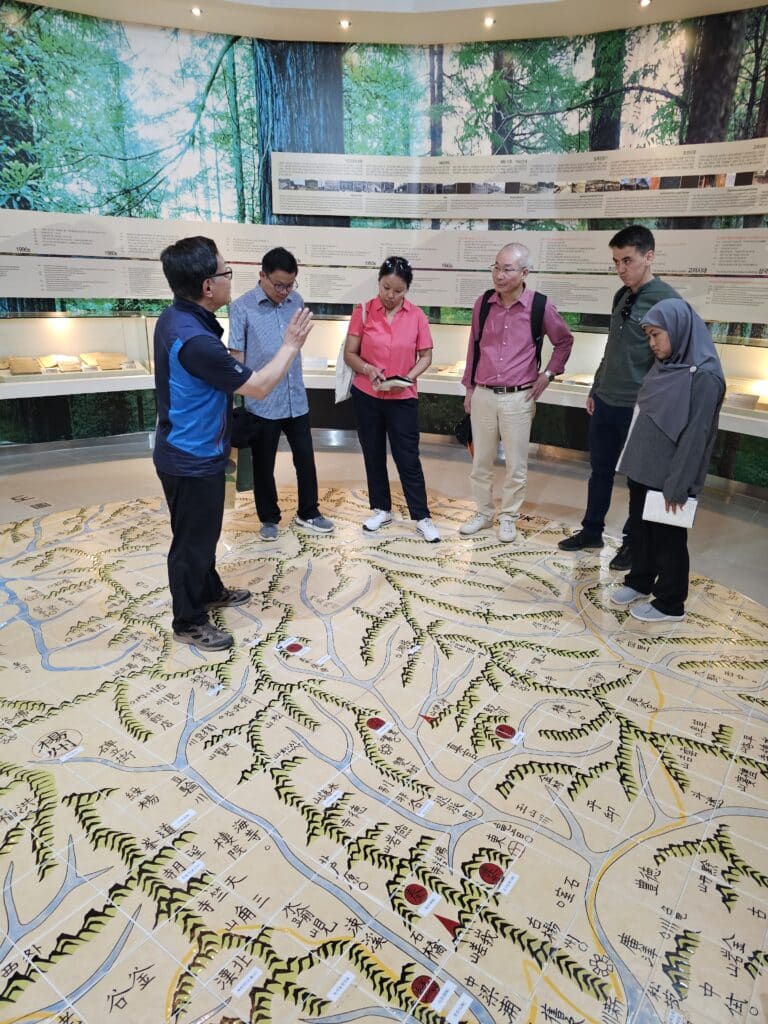
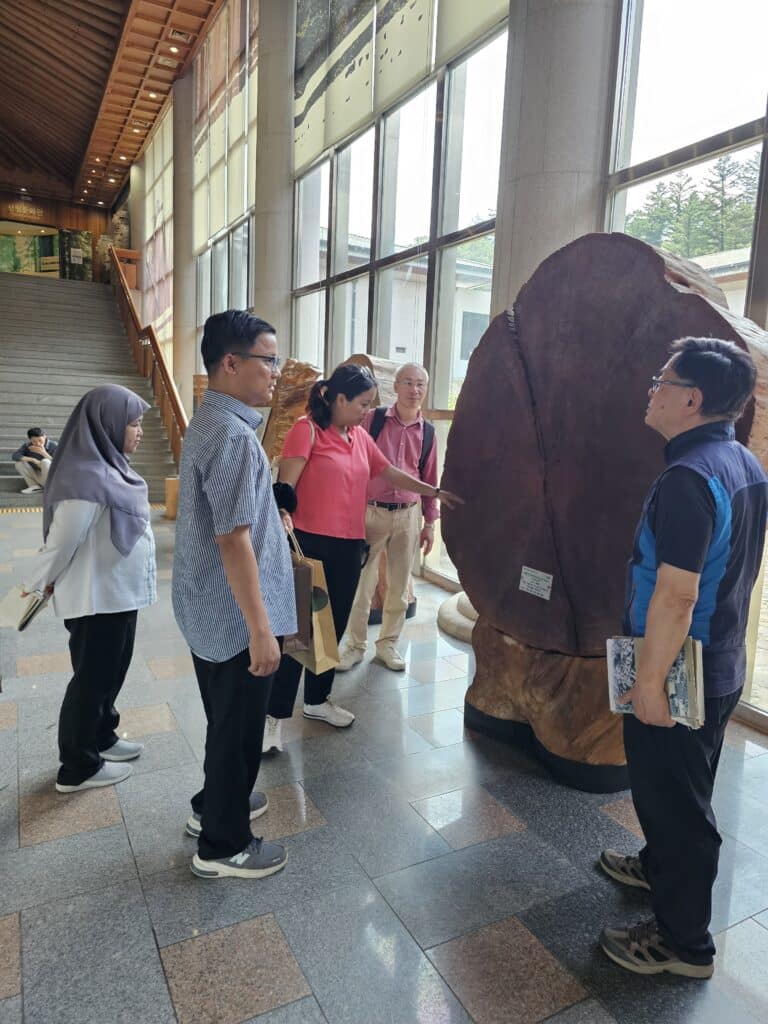
Contributed by Fellowship Officials of 2023 Program – Ike Mediawati, Zaw Min Aye, Niyaz Zholbarys and Tshering Zam

